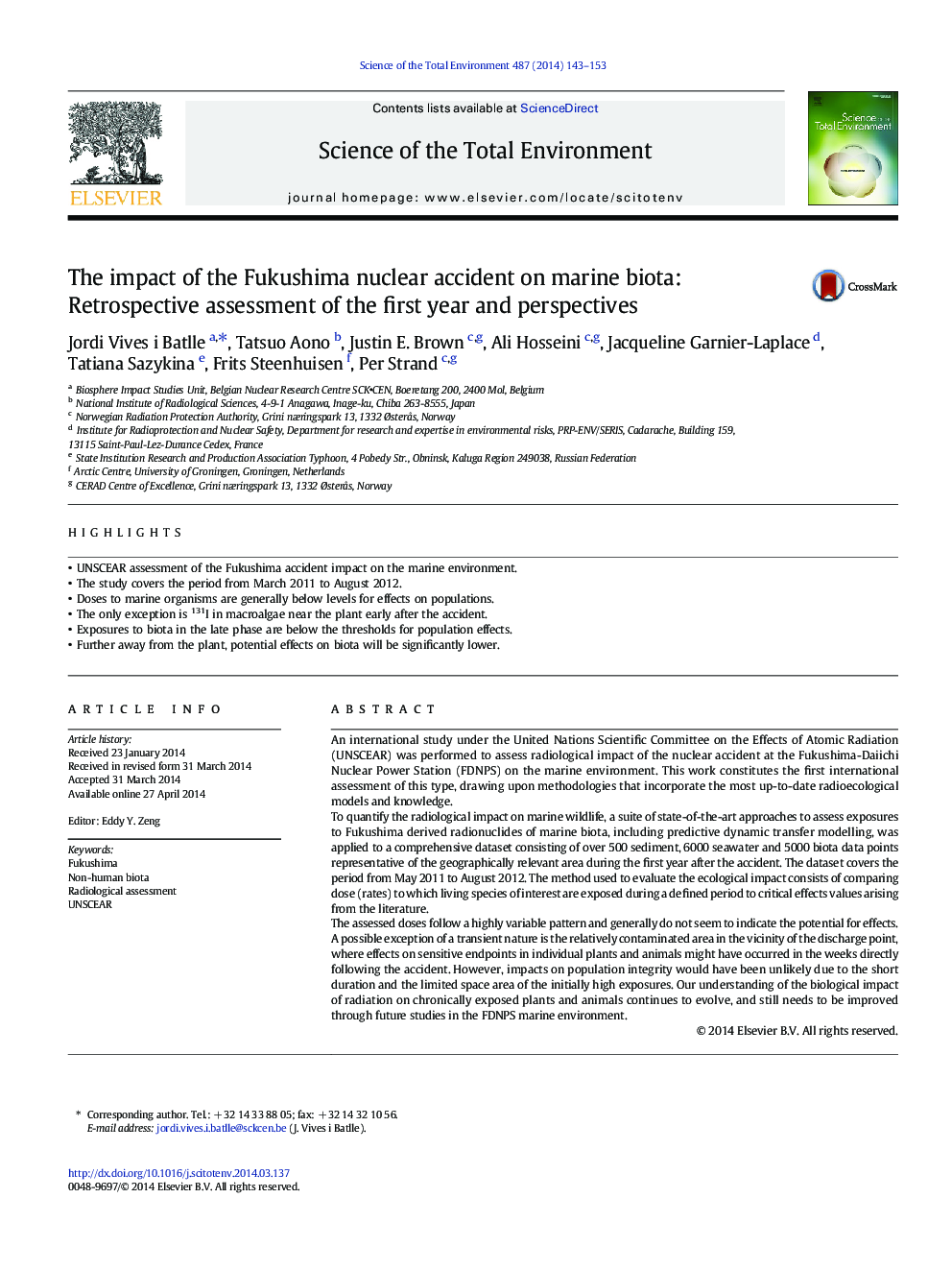| Article ID | Journal | Published Year | Pages | File Type |
|---|---|---|---|---|
| 6329909 | Science of The Total Environment | 2014 | 11 Pages |
Abstract
The assessed doses follow a highly variable pattern and generally do not seem to indicate the potential for effects. A possible exception of a transient nature is the relatively contaminated area in the vicinity of the discharge point, where effects on sensitive endpoints in individual plants and animals might have occurred in the weeks directly following the accident. However, impacts on population integrity would have been unlikely due to the short duration and the limited space area of the initially high exposures. Our understanding of the biological impact of radiation on chronically exposed plants and animals continues to evolve, and still needs to be improved through future studies in the FDNPS marine environment.
Related Topics
Life Sciences
Environmental Science
Environmental Chemistry
Authors
Jordi Vives i Batlle, Tatsuo Aono, Justin E. Brown, Ali Hosseini, Jacqueline Garnier-Laplace, Tatiana Sazykina, Frits Steenhuisen, Per Strand,
